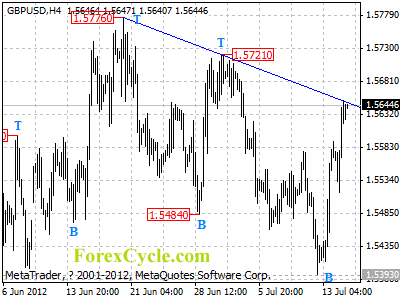By MoneyMorning.com.au
We may have just got our best contrarian signal to start buying mining shares.
This doesn’t come from the markets, economic data, or any traditional measurable observation.
It comes from our own dear Resources Minister, Martin Ferguson.
Under the headline of ‘Australia’s mining boom is over’, Mineweb reports:
‘…at the opening of the Australian Minerals Research Centre in Perth Ferguson said the premium prices China was paying for coal and iron ore were gone … the era of high commodity prices is over and to stay strong Australia must be more productive and develop new technology…’
If you read that as bad news, then read it again — but this time bear in mind you are listening to a politician.
Historically, politicians are not exactly the best forecasters.
It seems not five minutes ago, the government was making plans (and inventing taxes) around a mining boom that was going to infinity…and beyond.
But now — the mining boom is over?
Give me a break!
Just 18 months back, Ferguson himself was bullish as hell, preparing for the commodities boom to keep making Australians rich for years to come.
Commenting on the Australian Bureau of Agricultural and Resource Economics (ABARE) report, Martin Ferguson said ‘the figures showed the resources industry was going from ”strength to strength”’. He then upped the stakes by saying, ‘I expect this trend to continue, with more key projects potentially coming on line.’
The day he said that was a GREAT time to sell.
Within a few months, the Metals and Mining index started a 15 month slide that has shaved 40% off the index’s value.
The Australian Resource Minister – the Ultimate Contrarian Indicator?
Source: Slipstream Trader, with Money Morning edits
So forgive me if I don’t seem panicked at his latest comments. If his past form is any guide, you’ll do quite well by investing contrary to his views.
Because now he’s all but claiming the mining boom is over. That tells me we are at (or getting close to) the bottom in mining shares.
A turnaround in mining shares in this market? That probably sounds insane.
It’s hard to imagine when there is bad news everywhere; particularly when our number one customer — China — is in trouble.
We have been China-bashing recently ourselves.
But I couldn’t ignore there were a few decent nuggets of good news in an onslaught of China data last week. You just have to bear in mind that Chinese official data is as trustworthy as an email from a long-lost Nigerian relative.
The first thing to catch my eye was that, although the annual figure fell, the quarterly economic growth has been stable now for 3 quarters. The latest figure of 1.8% was pretty impressive, the same as the first quarter of this year, and not far behind the last quarter of 2011. It’s certainly not falling off a cliff just yet.
Chinese Quarterly Economic Growth Stabilising?
Source: Trading economics
The other thing to note is that Chinese bank lending is still increasing (click here for chart).
This is the Chinese government’s main method of giving the system another sugar rush, so we shouldn’t ignore the fact that last month’s lending has just jumped 50% compared to the figure this time last year. The Chinese premier is also out there hinting that the government is planning on more infrastructure spending.
Of course, ultimately these attempts may not keep the Merry-go-round from merrily going round. But at the very least we can expect to see commodities pick up on the back of this in the short term.
I’m certainly getting more bullish on gold stocks again.
But perhaps it’s also time to load up on all mining shares.
Now the Aussie Resources Minister has finally cracked and gone bearish…we must be getting close to a bull market rally.
Dr. Alex Cowie
Editor, Money Morning
Related Articles
Market Pullback Exposes Five Stocks to Buy
The Credit Market Debt Bubble and the Role of Gold
This Gold Price Cycle Shows We’re Headed for a Rise

Is This Man the Ultimate Contrarian Indicator for Mining Shares?







 Tradervox.com (Dublin) – The weekly jobless claims dropped from 376,000 to 350,000 this week, which is a big shift from the trend experienced before. Most economists have termed this as a one-off event and is not reflective of a change in trend. Such numbers were seen at the beginning of the year, and the current figure is a new four-year low.
Tradervox.com (Dublin) – The weekly jobless claims dropped from 376,000 to 350,000 this week, which is a big shift from the trend experienced before. Most economists have termed this as a one-off event and is not reflective of a change in trend. Such numbers were seen at the beginning of the year, and the current figure is a new four-year low. Tradervox.com (Dublin) – The sterling pound closed the week almost a cent higher than the previous week, following some strong releases at the end of the week. The strong Manufacturing production and industrial production reports came in above the market expectation hence boosting the demand for pound as a safe haven. However, the pair has pared its gains at the start of trading on Monday, after Rightmove HPI report showed that the index fell to the least in eight months. The index fell by 1.7 percent.
Tradervox.com (Dublin) – The sterling pound closed the week almost a cent higher than the previous week, following some strong releases at the end of the week. The strong Manufacturing production and industrial production reports came in above the market expectation hence boosting the demand for pound as a safe haven. However, the pair has pared its gains at the start of trading on Monday, after Rightmove HPI report showed that the index fell to the least in eight months. The index fell by 1.7 percent.